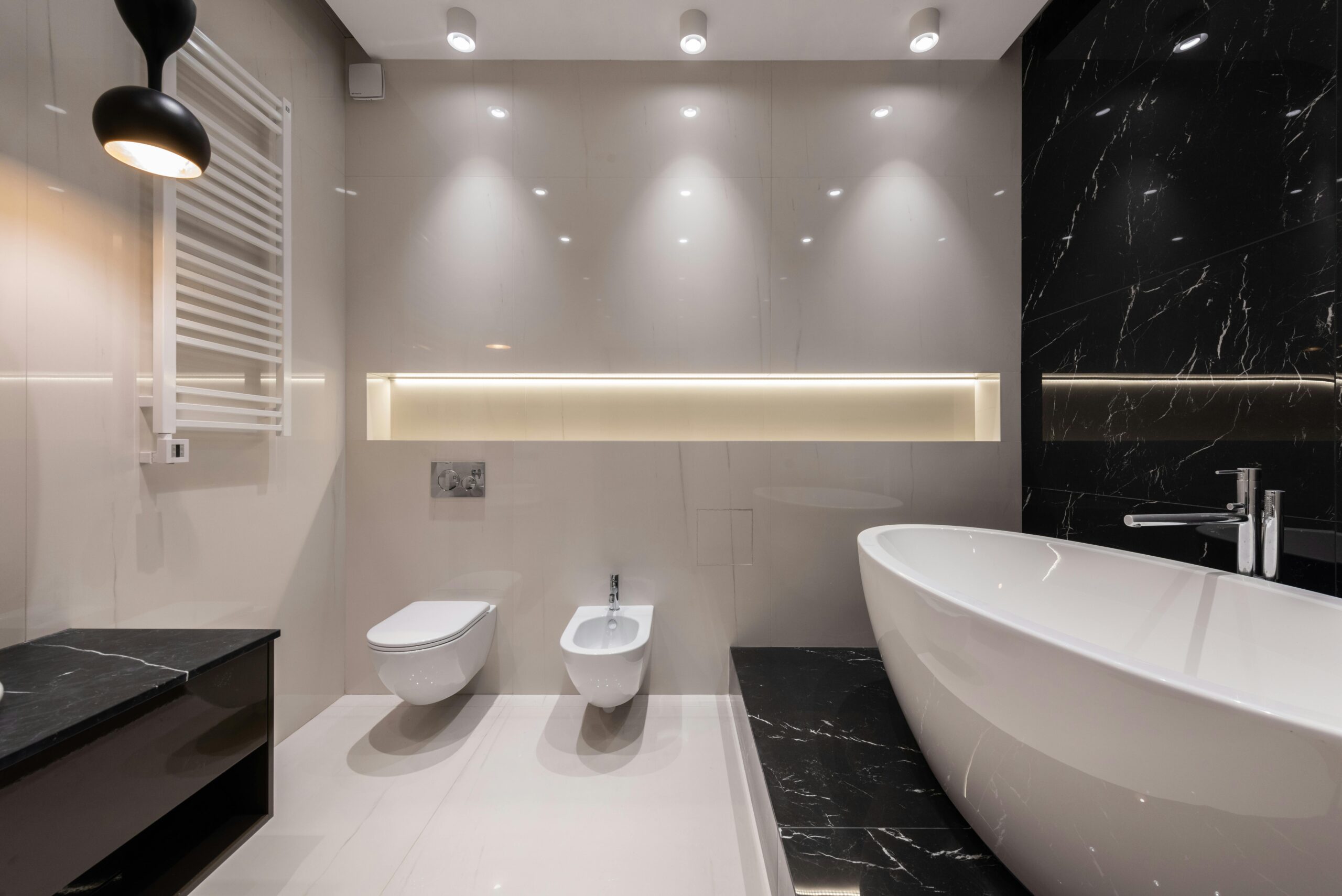HOME IMPROVEMENT
How to Build the Perfect Home Gym: A Beginner-Friendly Guide

Over the past decade of helping people start their fitness journey, I’ve seen one thing work better than anything else—a dedicated home gym. You don’t need a huge room or expensive machines. What you need is a plan, a little space, and some basic equipment.
In this guide, I’ll walk you through how to create your home gym, using easy steps anyone can follow. This isn’t based on guesswork. It’s built on real experience helping busy moms, professionals, and seniors create fitness spaces that get used.
Key Takeaways
- A home gym saves time and keeps you consistent.
- Small spaces and small budgets are not a problem.
- Start simple and grow your setup slowly.
- Keep things organized and motivating.
- Safety and maintenance matter for long-term success.
1. Why a Home Gym Works Better Than a Commercial Gym
A few years ago, one of my clients, James, canceled his commercial gym membership. He’d gone just twice in three months. The long commute, crowded space, and monthly fees made it hard to stay motivated.
We converted a small space in his garage using a mat, resistance bands, and some dumbbells. Now, James works out 4–5 times a week—consistently.
A home gym eliminates excuses. You control the time, music, and pace. No crowds. No travel. No pressure.
Plus, it builds self-discipline. When your gym is steps away, your workout becomes part of your day, not an added chore.
2. Choosing the Right Space for Your Home Gym
You don’t need a fancy room to get started. You just need a quiet, clean spot where you feel comfortable moving your body.
Here are a few ideas:
- A corner of your bedroom
- Part of your garage
- A section of your living room
- Even a balcony with some cover
What matters most is having enough space to stretch out and move safely. A 6×6-foot space is plenty for most workouts.
If possible, installing good lighting, mirrors, and adequate ventilation makes your area more inviting.
3. Affordable Yet Effective Tools for Fitness
The expenditures related to maintaining a home gym can still be worthwhile if the resources at hand are utilized properly. You can build it piece by piece. Here’s what I usually recommend for starters:
Essentials (Under $200):
- Yoga or exercise mat
- Resistance bands
- A pair of adjustable dumbbells
- Kettlebell (optional)
- Jump rope for cardio
If you have more room or budget:
- Add a foldable bench
- Get a pull-up bar that fits in your doorway
- Consider a second-hand treadmill or stationary bike
Tip: Check Facebook Marketplace or local fitness stores for affordable used gear.
4. How to Set Up Your Space Step-by-Step
Follow these steps to set up your home gym. It will be a breeze!
- Decide on the Exercises – Will this be yoga, cardio, strength training or a combination?
- Delete Obstructions – Clear out all furniture and unwanted items.
- Protective Floor Mat Installation – It adds grip and protects the floors.
- Sort out your Equipment – Wall hooks, baskets, and shelving units can all be used for more efficient storage.
- Add motivation – Hang up a calendar or goal tracker.
- Play music – Use a Bluetooth speaker or app to keep energy up.
Once you create a clean and motivating space, you’ll look forward to using it.
5. Small Space? No Problem
One of my clients, Anita, lives in a one-bedroom apartment. She thought she needed a full gym room to work out, but she didn’t.
She used:
- A foldable workout bench
- Bands with a door anchor
- A mat that she rolled under her bed
Now she does 30-minute workouts every morning in her living room.
Even in small homes, smart storage solutions can make your home gym doable.
6. Staying Motivated in Your Home Gym
Staying motivated at home can be tricky. But a few small habits can help:
- Schedule your workouts like meetings.
- Use a fitness app to track progress.
- Write down your goals and keep them visible.
- Reward yourself with small wins (new gear, a healthy treat).
- Join online classes or YouTube workouts.
Motivation grows when you feel progress, and the best way to feel that is to just keep showing up.
7. Keep Your Gear Clean and Safe
A well-kept home gym is safer and more fun to use. Here’s how to take care of it:
- Wipe down gear after each use
- Check bands for wear or tear regularly
- Keep weights off the floor with racks or storage
- Ensure your pull-up bar is tightly secured
- Clean your floor mat weekly
Safety isn’t boring—it’s smart. It also helps your equipment last longer.
8. Your Next Steps: Building the Habit
Start slow. Even 10 minutes a day adds up. Once you’ve got the basics, you can expand your setup or routine.
Here’s what I usually suggest:
- Week 1: Bodyweight and stretching
- Week 2: Add dumbbells and core exercises
- Week 3: Mix in cardio with a jump rope
- Week 4: Try a structured program or app
Let your home gym grow with you, not the other way around.
Conclusion
Creating a home gym isn’t just about saving time or skipping a membership fee. It’s about taking control of your health, on your terms.
You don’t need expensive equipment or tons of space. Just the right tools, the right mindset, and a little consistency.
So if you’re tired of waiting for the “right moment” to get fit, this is your moment. Start building your home gym today. You’ll never look back.
HOME IMPROVEMENT
How to Bring Nature Indoors: Using Animal-Themed Wallpaper for a Cozy and Stylish Home

Nature calms a busy room and adds a bit of wonder. Animal patterns do this especially well. They bring movement, story, and gentle humor without clutter. If you want an easy upgrade that works in many styles, explore Animals traditional wallpaper for prints that feel timeless yet fresh.
Why animal motifs work
Creatures add life to straight lines and hard surfaces. Feathers, fur, and scales read as soft texture from across the room. The eye follows a bird in flight or a fox in tall grass, and the space feels calmer. You can make the look playful or refined. It all depends on palette, scale, and placement.
Style directions to consider
- Classic and quiet. Toile scenes or fine line drawings in two colors suit bedrooms, studies, and small dining corners.
- Modern and graphic. Bold silhouettes—cranes, swallows, or tigers—on a solid ground. Keep furniture simple so the shapes lead.
- Cottage and woodland. Moths, hares, and owls in soft greens and browns bring a storybook mood without feeling childish.
- Tropical and coastal. Herons, fish, or sea turtles pair well with rattan, linen, and sandy neutrals.
- Kids and nurseries. Friendly bears or safari scenes in gentle tones create a calm backdrop for sleep and play.
Where animal prints shine
- Living room. Put a feature wall behind the sofa. Add linen curtains and a wood coffee table to keep it grounded.
- Bedroom. Use the headboard wall like art. Choose smaller repeats for compact rooms; go larger in high-ceiling spaces.
- Entry and hallway. A narrow repeat guides the eye forward and makes a strong first impression.
- Home office. A tidy motif behind the desk looks clean on video and cuts visual noise.
- Powder room. One dramatic wall plus a simple mirror creates a boutique moment. Ventilate well.
Color, scale, and balance
Decide what you want the wall to do. Need calm? Choose soft neutrals or misty blues with tiny repeats. Want energy? Try richer shades—ink, forest, umber—and a larger scene. Match the scale to the surface. Big murals suit broad spans. Small, tight patterns flatter niches and short walls. Keep one hero surface and let nearby planes breathe. Repeat two colors from the print in pillows, a throw, or a rug so the room feels intentional.
Materials and maintenance that fit real life
Peel-and-stick panels make weekend projects possible and suit renters. You can lift and reset a strip during install, then remove it later from sound, fully cured paint. Pasted options still shine on tricky surfaces and very busy corridors; they just need more prep. Many removable films are wipeable with a soft cloth and mild soap. Skip abrasives and harsh chemicals. In humid rooms, add ventilation and keep edges away from constant steam. Always order a sample and check color from morning to night.
Simple styling without extra lists
Let the animals lead and mix textures—linen, wool, stone, and a touch of metal—for depth. Repeat soft shapes. Add a round mirror, a globe lamp, or a table with curved edges. This keeps the natural look and avoids clutter. Keep art focused. Fewer, larger pieces beat a crowded grid and keep sightlines clean.
Planning, testing, and light
Tape a sample where you’ll see it most and look at it from the next room. If the view feels busy, lower contrast or choose a smaller repeat. Strong sun can fade prints over time, so consider UV shades on bright exposures. Good evening lighting matters too: a warm table lamp near the patterned wall adds glow and makes details read softly.
Budget-smart ways to start
You don’t need to cover every wall. Try the back of open shelves, a closet door, or a framed panel over a console. In a studio, one bird or woodland scene can define the lounge without a bulky divider. In a larger space, wrap only the fireplace wall or built-ins to avoid pattern fatigue while still adding character.
Need help choosing?
California Wallpaper can help with samples, repeat size, and lead times. Ask about finish (matte vs. lightly textured), cleanability, and the best adhesive type for your paint.
Bring the look home
Animal designs add story and comfort in a way plain paint can’t. Start small if you’re unsure. Keep the palette tight, match the scale to the wall, and repeat key tones in your textiles. With a few simple choices, you’ll get a home that feels cozy, stylish, and a little closer to nature—every single day.
HOME IMPROVEMENT
How Waterproof LED Strip Wholesale Is Shaping Modern Lighting Design

Lighting has become more than just a functional necessity—it’s now a major part of modern design, innovation, and lifestyle. From home interiors to commercial buildings and outdoor landscapes, LED technology is redefining how people think about light. Among the most flexible and in-demand products today are waterproof LED strip lights, and for businesses, sourcing from waterproof LED strip wholesale suppliers provides both economic and creative advantages.
There’s always more to learn—Explore More and see what’s trending now!
1. The Evolution of LED Lighting
Over the past decade, LED lighting has revolutionized the global lighting industry. Traditional incandescent and fluorescent bulbs are being replaced by LEDs for their superior energy efficiency, longevity, and environmental benefits.
Among the many LED solutions available, LED strip lights stand out because of their flexibility, slim design, and customizable features. The addition of waterproof protection has further expanded their use, allowing these strips to perform reliably both indoors and outdoors. For lighting companies and resellers, buying through waterproof LED strip wholesale channels means access to cutting-edge products at competitive prices.
2. Why Waterproof LED Strips Are in High Demand
Waterproof LED strips offer the same aesthetic benefits as regular LED strips but with extra protection against moisture, dust, and weather exposure. They are sealed with silicone, epoxy, or polyurethane coatings to achieve IP65, IP67, or IP68 ratings.
This durability makes them ideal for outdoor architecture, signage, bathrooms, kitchens, marine lighting, and even vehicles. Because of their versatility, waterproof LED strip wholesale suppliers are seeing growing global demand from contractors, interior designers, and lighting retailers.
3. Applications Across Multiple Industries
One of the biggest advantages of waterproof LED strips is their adaptability. They fit into nearly any lighting project, including:
- Residential use: under cabinets, staircases, patios, and pools
- Commercial lighting: hotels, offices, restaurants, and shopping centers
- Architectural decoration: building outlines, bridges, and monuments
- Retail and signage: product displays and illuminated advertising
- Automotive and marine: boats, RVs, and outdoor vehicles
By purchasing from waterproof LED strip wholesale sources, businesses can easily supply these diverse markets without worrying about performance under different environmental conditions.
4. Benefits of Buying Waterproof LED Strips Wholesale
For distributors, contractors, and importers, buying wholesale brings several clear advantages:
a. Cost Savings
Wholesale purchasing directly from factories eliminates middlemen and reduces per-unit costs, allowing businesses to maintain higher profit margins.
b. Product Consistency
Reliable wholesale suppliers maintain strict quality control and use branded LED chips to ensure color uniformity, brightness stability, and long lifespan.
c. Customization Options
Many suppliers offer OEM/ODM services, letting you choose color temperature, IP rating, voltage (12V/24V), and packaging style to suit your market needs.
d. Scalability
Wholesale ensures steady supply for large-scale projects and seasonal demands—essential for maintaining business stability.
These benefits make waterproof LED strip wholesale not just a purchasing decision but a strategic business move for long-term success.
5. Energy Efficiency and Environmental Responsibility
Sustainability is now a central concern for both businesses and consumers. LED strip lights are far more efficient than traditional lighting, converting most energy into visible light rather than heat. This results in up to 80% energy savings and significantly lower carbon emissions.
When you buy from a waterproof LED strip wholesale supplier, you also ensure compliance with global environmental standards like RoHS and CE. Many modern factories now use eco-friendly materials and recyclable packaging, aligning with global green initiatives.
6. Design Flexibility and Creativity
Lighting designers and architects love LED strips for their flexibility and visual impact. Waterproof models can be bent, cut, or shaped to fit various designs—from sleek minimalism to bold outdoor displays.
Because they are available in different colors (white, RGB, RGBW, or tunable white), they can create both functional and decorative effects. Warm white light can make a space cozy and inviting, while cool white enhances focus and cleanliness. For public spaces and entertainment venues, RGB strips add vibrant color transitions that attract attention.
Sourcing from waterproof LED strip wholesale ensures you always have access to the full range of color options and design variations.
7. Technological Advancements and Smart Lighting
The future of lighting lies in smart control systems, and waterproof LED strips are no exception. Today’s leading suppliers are integrating Wi-Fi, Bluetooth, and voice control capabilities into their waterproof LED strips.
Through mobile apps or smart assistants like Alexa and Google Home, users can adjust brightness, color, and timing schedules with ease. Businesses buying from wholesale suppliers can stay ahead of competitors by offering smart-ready products to their customers.
8. Choosing the Right Waterproof LED Strip Wholesale Partner
Not all suppliers offer the same quality or service. When choosing a wholesale partner, consider these key factors:
- Product Certifications: Look for CE, RoHS, UL, or ETL compliance.
- Material Quality: Check whether the coating and PCB materials are heat-resistant and durable.
- Production Capacity: Ensure the factory can handle large orders and offer consistent lead times.
- Testing Procedures: Reliable suppliers conduct waterproof, aging, and brightness tests before shipment.
- After-Sales Service: Technical support, warranty terms, and sample testing options are essential.
Building a long-term relationship with a trustworthy waterproof LED strip wholesale supplier helps you maintain stable product lines and brand reputation.
9. Global Market Opportunities
The global LED market is expanding rapidly, with strong demand coming from North America, Europe, and the Middle East. Outdoor architecture, smart city projects, and home automation are driving this growth.
For importers and lighting brands, this presents a huge opportunity. By sourcing waterproof LED strip lights wholesale, you can enter multiple sectors—residential, commercial, and industrial—while maintaining flexible pricing and high profit margins.
10. The Future of Waterproof LED Strip Lighting
As technology evolves, waterproof LED strips will continue to improve in brightness efficiency, flexibility, and intelligence. New developments like COB (Chip-on-Board) technology offer smoother, dot-free illumination, while advances in silicone extrusion make waterproofing more reliable and visually clean.
Businesses that establish strong supply chains with LED Strip manufacturer today will be better positioned to lead the market tomorrow.
Conclusion
Lighting is no longer just about brightness—it’s about experience, design, and sustainability. Waterproof LED strip wholesale solutions empower businesses to meet modern lighting demands with creativity, reliability, and affordability.
Whether for outdoor architecture, retail decoration, or smart home systems, waterproof LED strips offer the perfect combination of durability and elegance. By partnering with a dependable wholesale supplier, you can illuminate every corner of the modern world—beautifully, efficiently, and profitably.
There’s always more to learn—Explore More and see what’s trending now!
HOME IMPROVEMENT
Top Wall Options for Your Bathroom

You think you’re ready for a bathroom makeover?
For some unknown reason, walls in this ultimate sanctuary do not always get the attention they deserve. Whether you would like to create a cozy SPA Pinterest-like haven, a bold, ultra-modern look, or something very simple using wall wood decor, it’s the finish that can make or…break it.
If you are tired of classy tiles, stay with us to get more cool ways to dress up your bathroom walls.
Vinyl Wallpaper
Why does it rock in a bathroom? Because it’s waterproof, functional, and stylish. It’s crucial to stay away from paper coverings because they degrade in moist places. Luckily, today’s market offers a bunch of sophisticated colors, styles, and patterns. At the same time, you should remember that this material doesn’t stick well to flat, uneven, or matte surfaces. They are most effective when they’re not next to the shower stall, sink, and tub.
Natural Stone
Here’s the idea: use granite, marble, or slate stone to create an accent wall. Each material actually screams luxury! Natural stone brings depth and texture to the dullest bathroom, adding timeless elegance as well. Plus, if you adorn one wall only, you’ll save some money for other décor.
Ceramic Tile
If you’d like to try something new yet with a pinch of classiness, ceramic tile is the answer. Your only task is to install and maintain it properly to avoid moisture. In most cases, bathrooms have walls that are only partially tiled. You’re welcome to either paint or wallpaper the rest of the surface.
Paint
Choose the finest quality paint made for rooms with high humidity levels. We recommend using paint with gloss and high mildew and mold resistance.
Stuck in the middle of color options? Well, it’s the bathroom type that dictates the colors:
- Rooms without windows look best with lighter paint colors.
- Spaces with lots of natural light call for both dark and light hues.
Are you decorating a small bedroom? Try two colors at the same time. Thus, you’ll have the main color and an accent one in either darker or lighter hues. How about more drama in the interior? Add a mirror!
How-to Tips on Choosing Bathroom Wall Finishes
Are you tackling a new build? Or, perhaps, you are simply doing a revamp of your bathroom? If you do not know how to pick the best treatments for the walls of your special place of peace and solitude, here are some hints for you exclusively:
- Style. If you’re looking to revamp a powder room that has no shower, consider using beadboard or wallpaper.
- Durability. How often are you going to use the room? If it’s daily, choose tiles.
- Easy cleaning. If you prefer surfaces that can be easily and quickly cleaned, we recommend using paint.
- Budget-friendliness. If dealing with a tight budget, tileboard offers an easy way to hide imperfections without spending a lot of $.
The raison d’être of your bathroom is to provide you with a private oasis away from the busy life. The walls there do more than protect you from moisture – they make space 100% complete. And it does not matter what you choose – microcement or glossy tiles, the right treatment can turn your bathroom into a SPA-like conversation starter.

 GENERAL4 months ago
GENERAL4 months ago5 Factors That Affect Tattoo Removal Success

 ENTERTAINMENT2 weeks ago
ENTERTAINMENT2 weeks agoExploring the Kristen Archives: A Treasure Trove of Erotica and More

 LIFESTYLE9 months ago
LIFESTYLE9 months agoThe Disciplinary Wives Club: Spanking for Love, Not Punishment

 TECHNOLOGY8 months ago
TECHNOLOGY8 months agoBlog Arcy Art: Where Architecture Meets Art

 LIFESTYLE2 months ago
LIFESTYLE2 months agoWho Is Sandra Orlow?

 ENTERTAINMENT10 months ago
ENTERTAINMENT10 months agoThe Ultimate Guide to Shillong Teer Hit Number: How to Predict Your Next Win

 GENERAL3 weeks ago
GENERAL3 weeks agoEverything About King Von Autopsy Report Details

 LIFESTYLE1 month ago
LIFESTYLE1 month agoWho Is Wife Crazy Stacie









